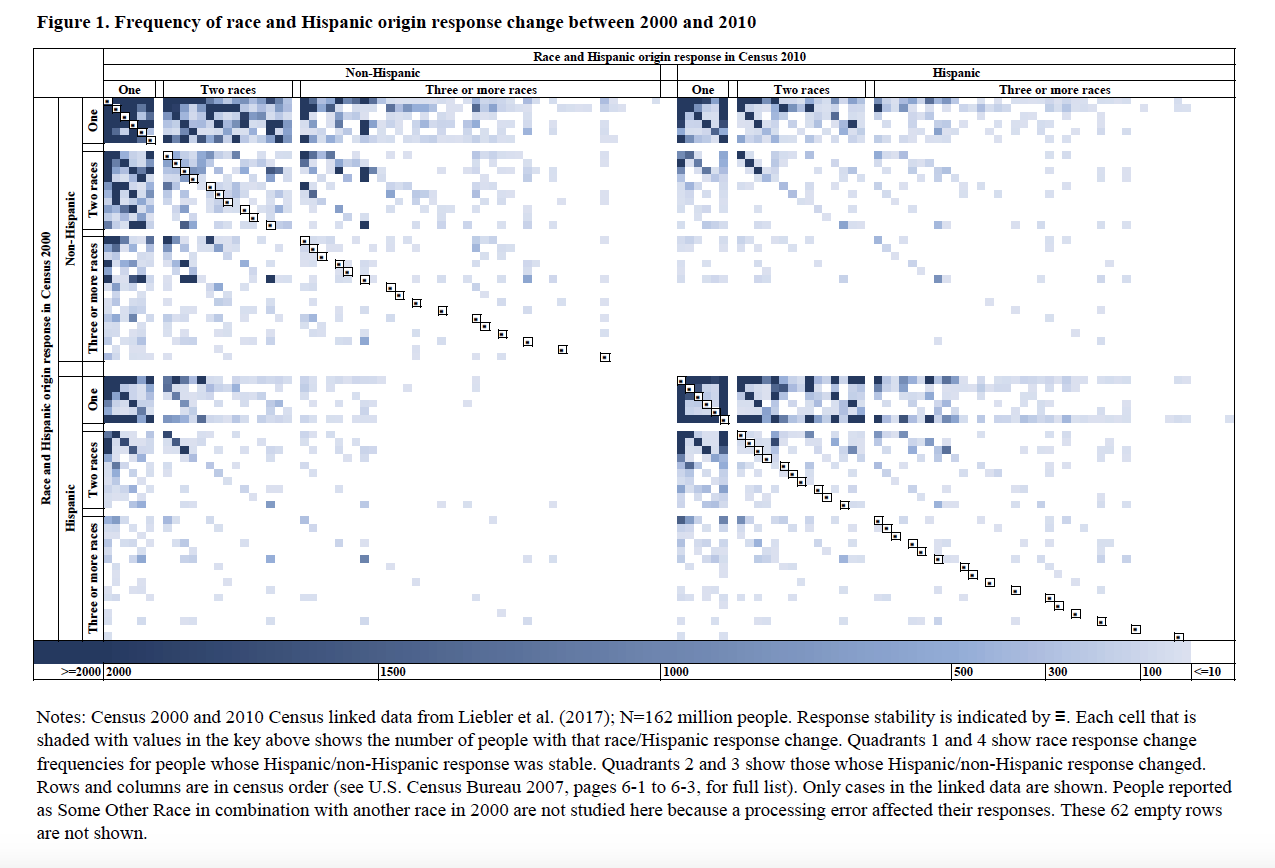Identities are intricate and multifaceted, and this disrupts efforts to measure them with simple, one-time questions.Posted in Excerpts/Quotes on 2017-07-14 21:59Z by Steven |
Identities are intricate and multifaceted, and this disrupts efforts to measure them with simple, one-time questions. It may seem like a safe assumption to treat race and ethnicity as life-long characteristics, whether in understanding, analysis, or interpretation. Theories about why people identify with a certain race or ethnicity, or why they change this identification, are also faced with explaining a complex situation of mixed heritage, response churning, and patterns that differ by age, location, and group. The world, it turns out, is not black and white. Careful study of social complexities such as these reveals colorful nuances that make the social world endlessly interesting and worthy of study.
Editorial Committee, “Think race and ethnicity are permanent? Think again,” N-IUSSP: IUSSP’s online news magazine, June 26, 2017. http://www.niussp.org/article/think-race-and-ethnicity-are-permanent-think-again-surprise/.
